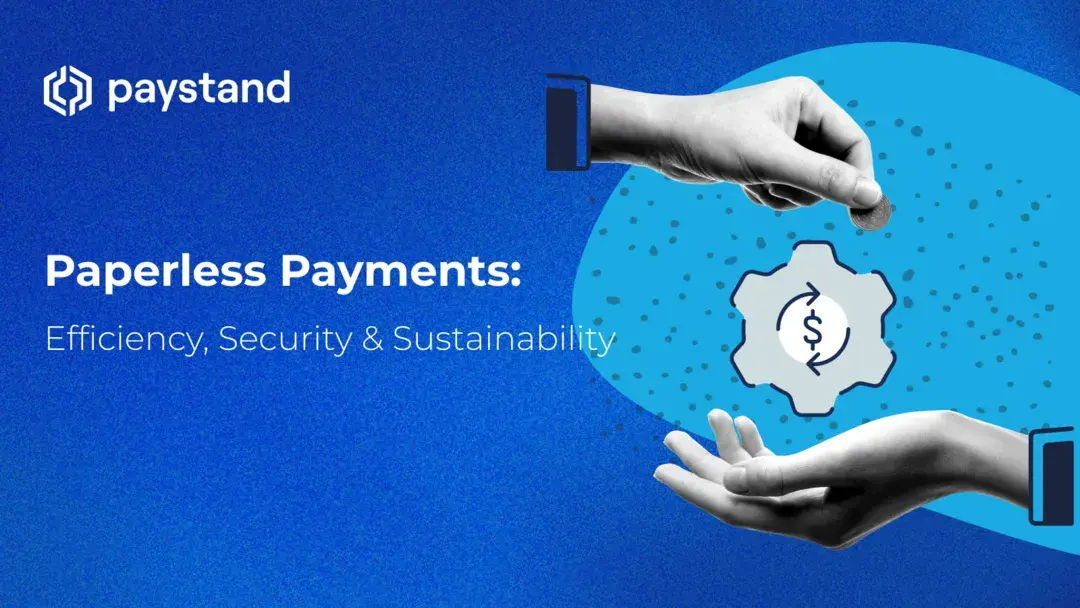Paperless Payments: Efficiency, Security & Sustainability

As businesses evolve in the digital age, transitioning to paperless payments is critical for finance leaders aiming to enhance efficiency, security, and sustainability. This move could revolutionize financial operations, improve efficiency, bolster security, and promote sustainability. By embracing paperless payments and implementing a robust AR process, businesses can position themselves for success in the digital age.
This article aims to explore paperless payments comprehensively, highlighting their many benefits and offering practical insights into implementing a paperless accounts receivable (AR) process.
What Are Paperless Payments?
Paperless payments refer to transactions conducted electronically, eliminating the need for paper checks, invoices, and receipts. These digital payments encompass various methods, such as:
- Electronic Funds Transfers (EFT): Direct funds transfer between bank accounts.
- Credit Card Payments: Payments made using credit or debit cards.
- Automated Clearing House (ACH) Transactions: Batch processing of transactions between banks.
- Online Payment Gateways: Platforms that facilitate electronic payments via the Internet.
By leveraging these digital methods, businesses can streamline payment processes and enhance overall financial operations.
What Are the Benefits of Paperless Payments?
Improved Efficiency
- Streamlined Processes. Digital payments automate many aspects of the payment process, reducing the time and labor involved in handling paper checks and invoices. This includes automated invoicing, payment tracking, and reconciliation, which can free up valuable resources for other tasks.
- Faster Transactions. Payments can be processed and cleared faster than traditional methods, leading to quicker access to funds. This can significantly improve cash flow management and financial planning.
Enhanced Security
- Reduced Fraud Risk. Electronic payments offer better tracking and encryption, lowering the risk of fraudulent activities compared to paper checks. Digital transactions provide a clear audit trail, making detecting and preventing fraud easier.
- Secure Data Management. Digital payment systems often have robust security protocols that protect sensitive financial information. Features such as encryption, tokenization, and multi-factor authentication enhance transaction security.
Increased Sustainability
- Environmental Impact. Going paperless reduces the demand for paper, decreasing your business's environmental footprint. This move supports corporate social responsibility initiatives and appeals to environmentally conscious stakeholders.
- Cost Savings. Lowering the need for paper, printing, and postage can result in significant savings. These savings can be redirected towards other strategic investments or passed on to customers through competitive pricing.
How to Make the Accounts Receivable Process Paperless?
1. Implement AR Automation
- AR Automation Software. Invest in AR automation tools that streamline the invoicing and payment collection process. These systems can send invoices electronically, track payments, and reconcile accounts automatically.
- Digital Payment Methods. Encourage clients to settle invoices using digital payment methods like ACH, credit cards, and online payment portals. Providing multiple digital options can increase the likelihood of timely payments.
2. Streamline Payment Processing
- Integrate Payment Gateways. Use integrated payment gateways that connect seamlessly with your accounting software, ensuring real-time updates and accurate record-keeping. Gateways such as PayPal, Stripe, and Square offer robust integrations with various accounting platforms.
- Adopt Zero-Fee Processing Solutions. Explore zero-fee processing options to reduce transaction costs and increase profitability. Some providers, like Paystand, offer fee-free processing for specific payment methods or transaction volumes, which can enhance your bottom line. In Paystand’s case, this method is the Paystand Bank Network.
3. Educate and Encourage Stakeholders
- Training Programs. Train your team on using new digital payment systems and the benefits of paperless transactions. This ensures a smooth transition and maximizes the efficiency gains from the new processes.
- Customer Communication. Communicate the advantages of digital payments to your clients and provide easy-to-follow instructions for making the switch. Highlight benefits such as faster processing times, enhanced security, and environmental impact to encourage adoption.
Adopting paperless payments is a strategic move that can save your business time, money, and resources. Digital payments are essential to modern financial operations, improving efficiency, enhancing security, and promoting sustainability. Finance leaders should take proactive steps to implement AR automation and streamline payment processing to reap these benefits fully.
By transitioning to paperless payments, your business can stay ahead of the curve, ensuring a more efficient, secure, and sustainable financial future. The time to make the shift is now, and the benefits are clear: enhanced operational efficiency, improved security, and a positive environmental impact. Embrace the future of payments and lead your business into a new era of financial management.
For more insights into how blockchain technology can further revolutionize B2B payments, download our ebook, Why B2B Companies Need to Adopt Blockchain Payments.





